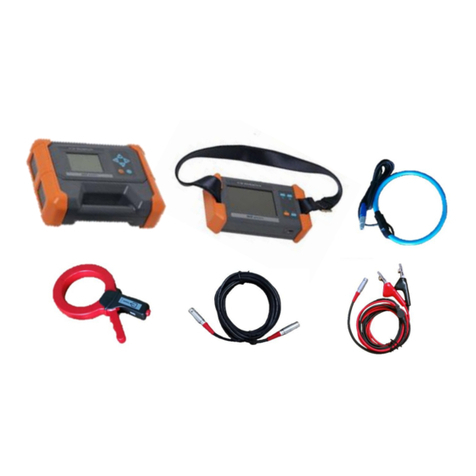Table of Contents
1. SAFETY INSTRUCTIONS..............................................................................................................6
2. PRODUCT OVERVIEW..................................................................................................................7
2.1 Product features........................................................................................................................7
2.2 Scope of application...................................................................................................................7
2.3 Product nomenclature ...............................................................................................................8
2.4 Environmental conditions...........................................................................................................8
2.5 Standard Configuration ..............................................................................................................8
2.6 Technical Data Sheet..................................................................................................................9
2.7 Instrument Structure ...............................................................................................................10
3. WORKING BACKGROUND, PRINCIPLE.....................................................................................10
3.1 Working background................................................................................................................10
3.2 Working principle ....................................................................................................................11
4. INSTALLATION AND ADJUSTMENT...........................................................................................12
4.1 Battery Connection ..................................................................................................................12
4.2 Install Probe ............................................................................................................................13
4.3 Installation and adjustment of the handle..................................................................................14
5. PREPARATION BEFORE USE ....................................................................................................16
5.1 Turning on the Tablet PC ..........................................................................................................16
5.2 Turning on the Detector ...........................................................................................................18
5.3 Bluetooth Connection ..............................................................................................................18
5.4 Launch APP .............................................................................................................................19
5.5 Operation Interface .................................................................................................................20
5.6 Button and Area function introduction ......................................................................................21
6. GETTING STARTED ....................................................................................................................25
6.1 Determine cable path...............................................................................................................25
6.2 Looking for fault discharge .......................................................................................................26
6.3 Closing in on the fault ..............................................................................................................27
6.4 Initiate remote assistance ........................................................................................................30
6.5Instrument shutdown ..............................................................................................................30
7. TRANSPORTATION, STORAGE AND CHARGING ....................................................................30
7.1 Transportation considerations ..................................................................................................30
7.2 Storage conditions, storage period and precautions ...................................................................30
8. INSTRUMENT CHARGING ..........................................................................................................31
9. UNPACKING AND INSPECTION.................................................................................................31
10. MAINTENANCE AND TROUBLESHOOTING...........................................................................31
10.1 Daily maintenance ...................................................................................................................31
10.2 Simple problem handling..........................................................................................................32
11. PACKING LIST –T-506.............................................................................................................33





























